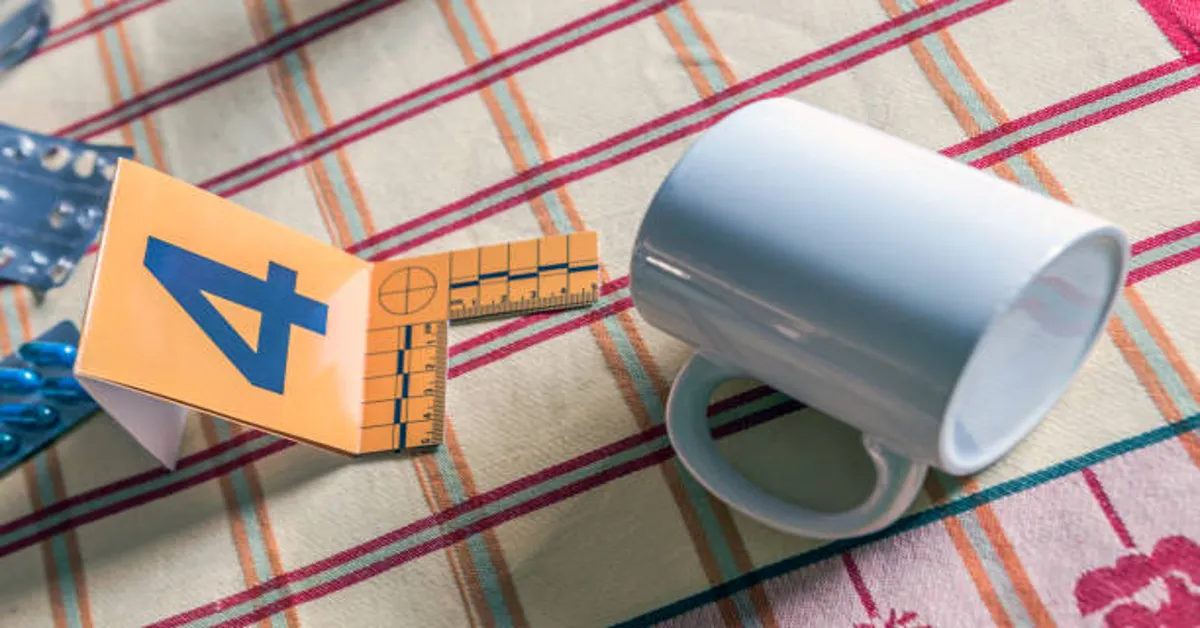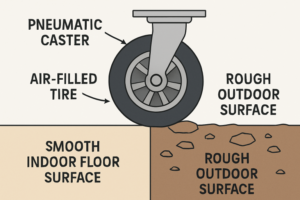When it comes to women’s lingerie and breast size categorization, the term “C cup” is one of the most recognized. Many people consider it a “middle range” cup size—often perceived as neither too small nor too large, and comfortably balanced in proportion. However, the reality is far more nuanced. Cup size is not just a simple label; it’s the result of precise measurements, relative proportions, body shape differences, and personal comfort considerations.
In this guide, we will explore what the C cup actually means, how it’s measured, how it looks on different body types, what to consider when buying bras, the best styles available, common misconceptions, and how to maintain comfort and health when wearing this size.
1. Understanding the Concept of a C Cup
A bra cup letter (A, B, C, D, etc.) represents the difference between the bust measurement (fullest part of the breasts) and the band measurement (just under the bust). In simple terms:
- Bust measurement: The circumference around the fullest part of your chest.
- Band measurement: The circumference just under your bust, around the ribcage.
The difference between these two numbers determines the cup size.
| Difference (inches) | Cup Size |
|---|---|
| 1 | A |
| 2 | B |
| 3 | C |
| 4 | D |
So, a C cup corresponds to roughly a 3-inch difference between bust and band measurements.
However, this definition is only part of the story. Bra sizing also involves the band number (such as 32C, 34C, 36C), and this dramatically affects how a C cup looks and fits. A 32C is smaller in volume than a 36C because cup volume changes with the band size—a concept known as “sister sizing.”
2. How Cup Size Changes with Band Size
Many people are surprised to learn that cup sizes are relative, not absolute. This means a C cup in one band size can look completely different from a C cup in another band size.
| Band Size | Cup Label | Cup Volume Equivalent |
|---|---|---|
| 30D | ~32C | Smaller frame, similar volume |
| 32C | ~34B | Moderate frame |
| 34C | ~36B | Fuller frame |
| 36C | ~38B | Broader chest |
For example:
- A 32C has a smaller overall breast volume than a 36C, even though both have a “C” label.
- This is why you may try on a bra labeled as C cup in one size and find it fits completely differently in another.
Understanding sister sizing helps when your preferred size is unavailable. If you wear a 34C and the store doesn’t have it, you might try a 32D or 36B, adjusting the band and cup together to maintain similar fit.
3. Common Body Proportions with a C Cup
C cups can appear differently based on a person’s body frame, height, and chest width.
On a Petite Frame
A C cup may appear fuller and more prominent because the breasts occupy more space relative to the torso.
On an Average Build
A C cup often appears balanced, creating a proportionate silhouette without drawing excessive attention to the chest area.
On a Broader Frame
A C cup might appear moderate or smaller because the width of the chest disperses the breast volume over a larger area.
4. Misconceptions About the C Cup
Despite being one of the most common cup sizes in the lingerie industry, the C cup is surrounded by misconceptions:
- Misconception 1: C cup is “large.”
In reality, it is a mid-range size and its visual size varies greatly by body type. - Misconception 2: All C cups are the same size.
Cup volume changes with band size, so a 32C and 38C are vastly different. - Misconception 3: C cup means you can wear any bra comfortably.
Fit still depends on breast shape, band snugness, and strap adjustment.
5. Measuring Yourself for a C Cup
Correct measurement is the foundation of comfort. To determine if you wear a C cup:
- Measure the band: Place a soft tape under your bust, parallel to the floor, and pull snugly. Round to the nearest whole number.
- Measure the bust: Wrap the tape around the fullest part of your bust, keeping it level and not too tight.
- Calculate the difference: Bust minus band = cup size.
- 3 inches difference = C cup.
Example:
- Band measurement: 34 inches
- Bust measurement: 37 inches
- Difference: 3 inches → C cup
- Size: 34C
6. Bra Styles Suitable for C Cup Wearers
Different bra styles can enhance, support, or reshape how a C cup looks and feels.
| Bra Style | Description | Best For |
|---|---|---|
| T-shirt Bra | Smooth cups for a seamless look under clothing | Everyday wear |
| Balconette Bra | Low-cut cups with wide straps | Wearing with low necklines |
| Full Coverage Bra | Higher cup coverage | Maximum support and modesty |
| Push-up Bra | Padding lifts and centers breasts | Enhanced cleavage |
| Wireless Bra | No underwire, relies on soft support | Comfort at home |
7. Breast Shapes and Their Effect on C Cup Fit
Cup size is only one piece of the puzzle—breast shape also affects how a bra fits.
- Full on Top: Needs more space in the upper cup to avoid spillage.
- Full on Bottom: Works well with plunge bras to fill the lower cup.
- Even Shape: Fits most bra styles without significant gapping.
- Wide Set: May require bras with inward-angled straps.
- Close Set: Benefits from plunge styles to separate without excess compression.
8. Comfort and Health Considerations
A poorly fitting bra can lead to discomfort, back strain, and even changes in posture. For C cup wearers, common fit issues include:
- Straps digging into shoulders (band too loose, straps carrying too much weight).
- Underwire poking (cup too small or wrong shape for breast).
- Cup wrinkling (cup too large or shape mismatch).
- Band riding up (band too loose).
Health Tip: Regularly remeasure your size every 6–12 months, as weight changes, pregnancy, hormonal fluctuations, and aging can alter breast size.
9. Clothing Tips for C Cup Shapes
A C cup offers versatile styling options. The balanced size works with most necklines and fabrics without requiring extensive structural support in clothing.
- Fitted Tops: Offer a defined waist-to-bust ratio without pulling buttons.
- Wrap Dresses: Accentuate curves while offering adjustability.
- V-Neck Sweaters: Create a flattering vertical line.
- Light Fabrics: Avoid excess bulk but may require a smooth bra underneath.
10. Psychological and Cultural Perceptions of the C-Cup
In popular culture, the C-cup is often portrayed as an “ideal” size—moderate, aesthetically balanced, and easy to style. However, every individual’s perception of their own body is subjective. While some see it as perfect, others may wish for more or less volume. The healthiest approach is to focus on comfort, personal style, and physical well-being rather than societal expectations.
11. C Cup in Different International Sizing Systems
Bra sizing changes across countries, so a C-cup in one system might be labeled differently in another.
| Country/Region | Example Size Equivalent to US 34C |
|---|---|
| US/UK | 34C |
| Europe (EU) | 75C |
| France/Spain | 90C |
| Australia/NZ | 12C |
| Japan | 75C (but cup volume may differ slightly) |
12. Tips for Long-Term Comfort with a C-Cup
- Rotate bras to let elastic rest and maintain shape.
- Hand-wash or use lingerie bags to prevent distortion.
- Replace bras every 6–12 months depending on wear frequency.
- Adjust straps regularly to maintain proper lift.
- Choose breathable fabrics for everyday wear.
13. Summary Table: C-Cup Key Facts
| Feature | Detail |
|---|---|
| Measurement difference | ~3 inches between bust and band |
| Average perception | Balanced, mid-size cup |
| Fit depends on | Band size, breast shape, strap adjustment |
| Best bra types | T-shirt, balconette, full coverage, push-up, wireless |
| Common issues | Straps digging, band riding up, underwire discomfort |
| International variations | Same letter, different numbers across systems |
Conclusion
A C cup is more than a letter—it’s a combination of measurements, body proportions, and personal comfort preferences. Understanding the relationship between bust and band size, recognizing the role of breast shape, and choosing styles suited to your needs can transform your lingerie experience from trial-and-error to effortless confidence. Whether you see the C-cup as perfect, practical, or just another step in your size journey, the key lies in finding bras that fit well, support your lifestyle, and make you feel at ease in your own skin.
ALSO READ: Solar Panels in Teas Passage: Complete Guide and Insights
Frequently Asked Questions (FAQs)
1. Is a C cup considered big or small?
A C cup is generally considered mid-sized. Its appearance varies based on band size and body proportions.
2. Does a C cup fit the same in all bra brands?
No. Different brands use slightly different sizing standards, so trying on is important.
3. What is the difference between 34C and 36C?
The 36C has a larger cup volume and wider band compared to the 34C.
4. Can breast shape affect how a C cup fits?
Yes. Fullness on top or bottom, spacing, and width can all change how a C cup bra feels.
5. How often should I remeasure my bra size?
Every 6–12 months or after weight, hormonal, or lifestyle changes to ensure optimal fit.









